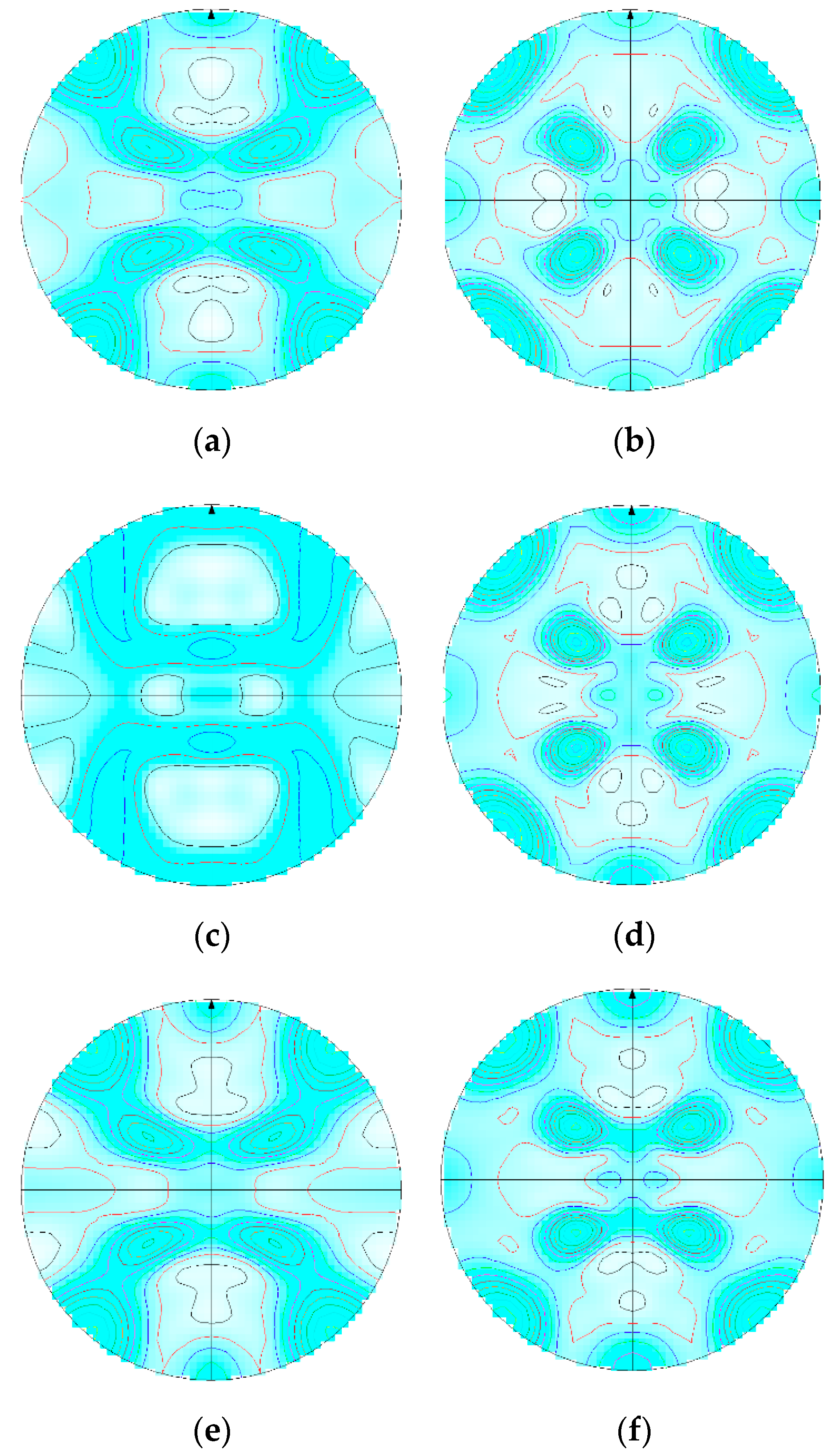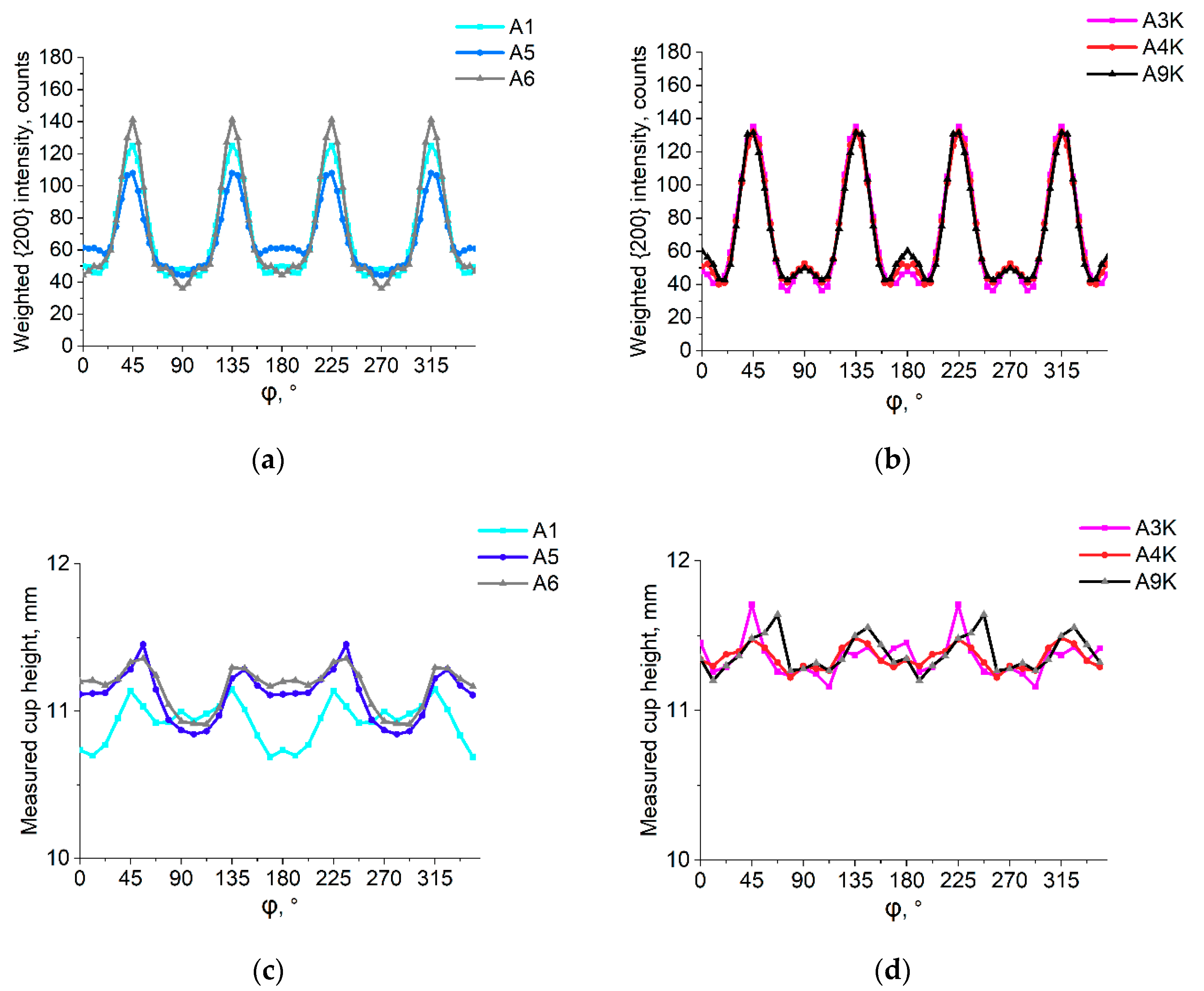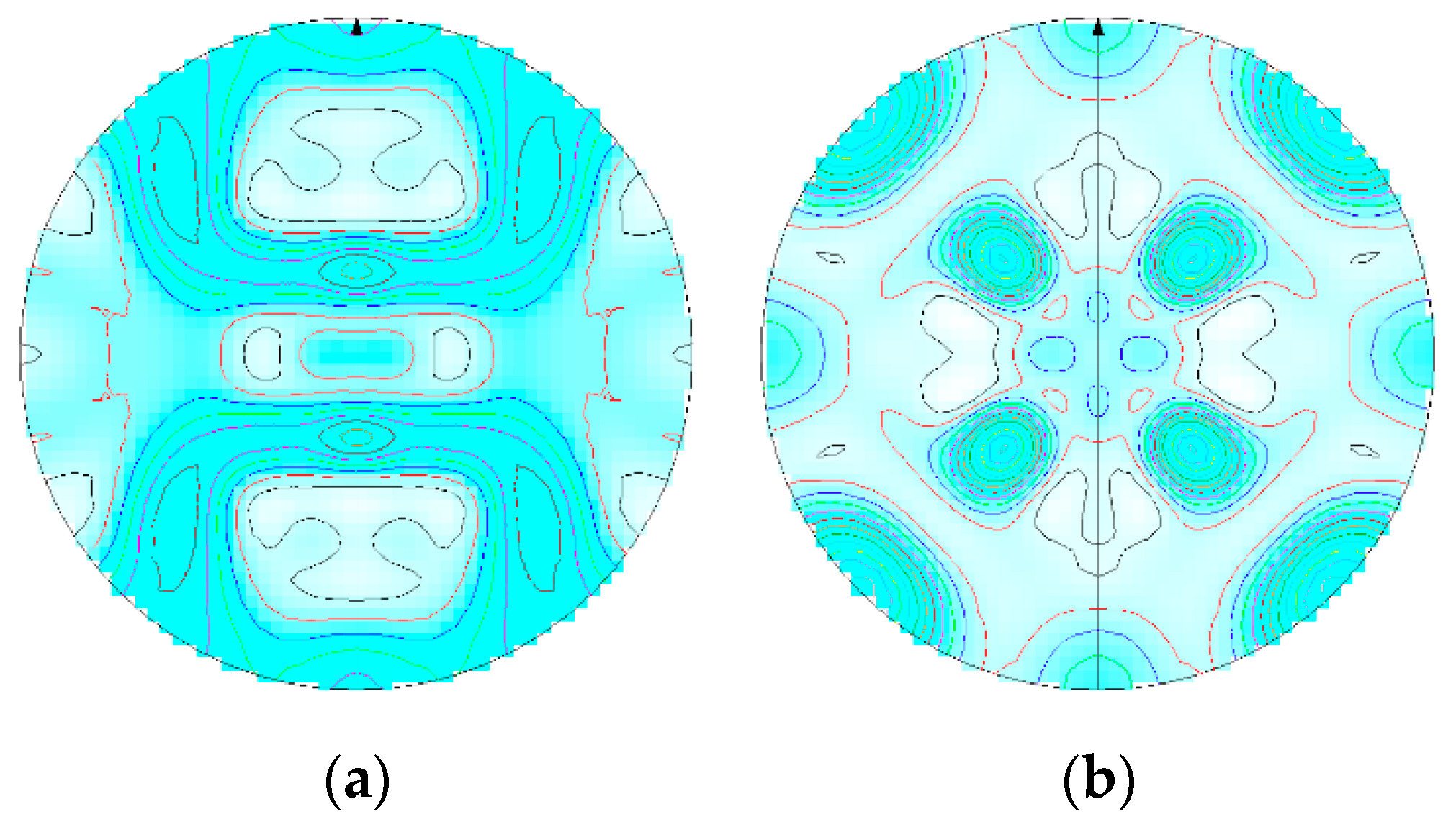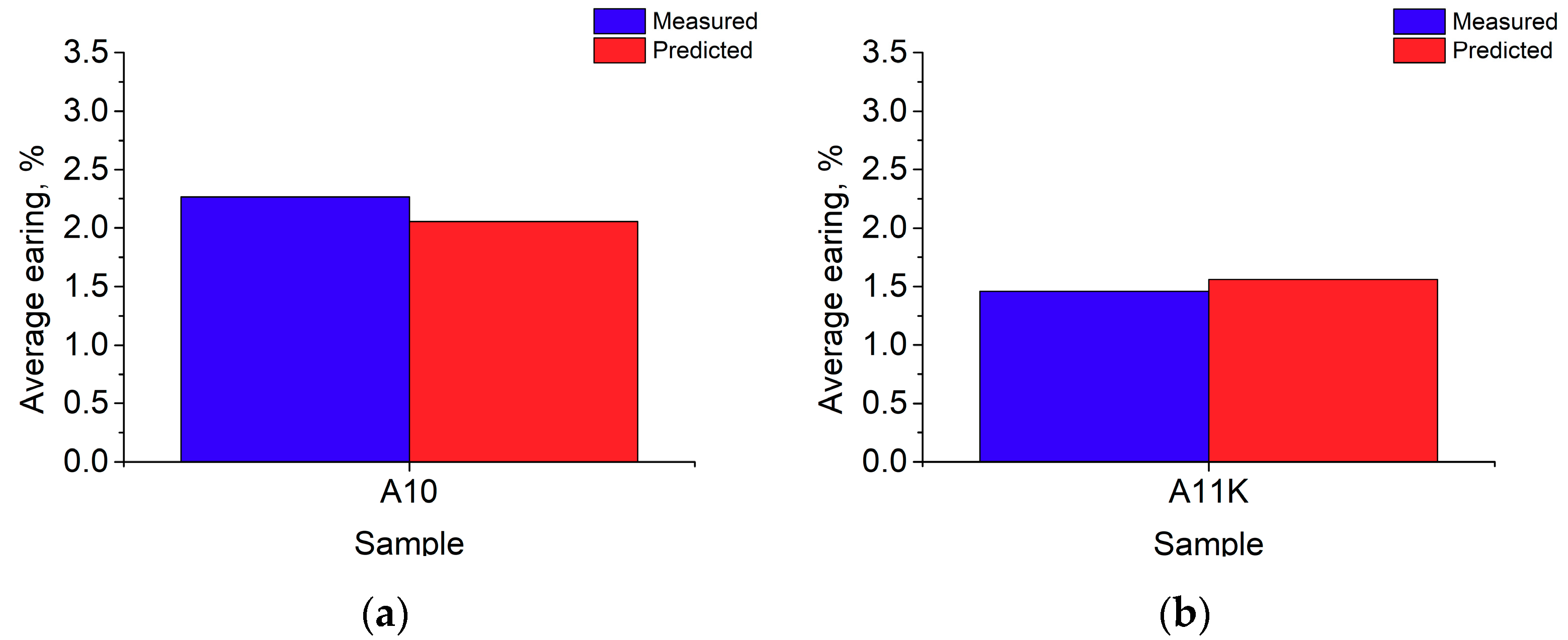Prediction of Earing of Cross-Rolled Al Sheets from {h00} Pole Figures
Abstract
:1. Introduction
2. Materials and Methods
3. Results
3.1. Results of 6 Pass Rolling
3.2. Results of 12 Pass Rolling
4. Discussion
Author Contributions
Funding
Acknowledgments
Conflicts of Interest
References
- Neugebauer, R.; Glass, R.; Kolbe, M.; Hoffmann, M. Optimisation of processing routes for cross rolling and spin extrusion. J. Mater. Process. Tech. 2002, 125–126, 856–862. [Google Scholar] [CrossRef]
- Li, X.; Al-Samman, T. Mechanical properties and anisotropy of ME20 magnesium sheet produced by unidirectional and cross rolling. Mater. Des. 2011, 32, 4385–4393. [Google Scholar] [CrossRef]
- Wronski, S.; Wrobel, M.; Baczmanski, A.; Wierzbanowski, K. Effects of cross-rolling on residual stress, texture and plastic anisotropy in f.c.c. and b.c.c. metals. Mater. Charact. 2013, 77, 116–126. [Google Scholar] [CrossRef]
- Huh, M.Y.; Cho, S.Y.; Engler, O. Randomization of the annealing texture in aluminum 5182 sheet by cross-rolling. Mat. Sci. Eng. A 2001, A315, 35–46. [Google Scholar] [CrossRef]
- Tang, W.; Huang, S.; Li, D.; Peng, Y. Mechanical anisotropy and deep drawing behaviors of AZ31 magnesium alloy sheets produced by unidirectional and cross rolling. J. Mater. Process. Tech. 2015, 215, 320–326. [Google Scholar] [CrossRef]
- Fukui, S.; Kudo, H. The earing in deep-drawing and directionality in tension-test of sheet metal. Rep. Inst. Sci. Tech. Univ. Tokyo 1950, 4, 33. [Google Scholar]
- Sowerby, R.; Johnson, W. Prediction of earing in cups drawn from Anisotropic sheet using slip-line field theory. J. Strain Anal. 1974, 9, 102–108. [Google Scholar] [CrossRef]
- Tucker, G.E.G. Texture and earing in deep drawing of aluminium. Acta Metall. 1961, 9, 275–286. [Google Scholar] [CrossRef]
- Kanatake, N.; Tozawa, Y.; Otani, T. Calculations from texture of earing in deep drawing for fcc metal sheets. Int. J. Mech. Sci. 1983, 25, 337–345. [Google Scholar] [CrossRef]
- Van Houtte, P.; Cauwenberg, G.; Aernoudt, E. Analysis of the earing behaviour of aluminium 3004 alloys by means of a simple model based on yield loci calculated from orientation distribution functions. Mater. Sci. Eng. 1987, 95, 115–124. [Google Scholar] [CrossRef]
- Engler, O.; Mertens, N.; Van Dam, P. Texture-based design of a convoluted cut-edge for earing-free beverage cans. J. Mater. Process. Tech. 2011, 211, 1278–1284. [Google Scholar] [CrossRef]
- Benke, M.; Hlavacs, A.; Imre, P.; Mertinger, V. Prediction of earing of aluminium sheets from {h00} pole figures. Eur. J. Mech. A Solid 2020, 81, 103950. [Google Scholar] [CrossRef]
- Sepsi, M.; Mertinger, V.; Benke, M. Sample cutting-free pole figure measurement method for centreless diffractometers in modified X mode. Mater. Char. 2019, 151, 351–357. [Google Scholar] [CrossRef]
- Ma, Q.; Mao, W.; Feng, H.; Yu, Y. Rapid texture measurement of cold-rolled aluminum sheet by X-ray diffraction. Scr. Mater. 2006, 54, 1901–1905. [Google Scholar] [CrossRef]








| Number of Passes | Rolling Mode | Sample | Rotation | Final Thickness, mm |
|---|---|---|---|---|
| 6 | UD | A1 | - | 1.04 |
| A5 | - | 1.03 | ||
| A6 | - | 1.03 | ||
| CR | A3K | back and forth | 1.14 | |
| A4K | clockwise | 1.13 | ||
| A9K | back and forth | 1.13 | ||
| 12 | UD | A10 | - | 0.99 |
| CR | A11 | back and forth | 1.10 |
© 2020 by the authors. Licensee MDPI, Basel, Switzerland. This article is an open access article distributed under the terms and conditions of the Creative Commons Attribution (CC BY) license (http://creativecommons.org/licenses/by/4.0/).
Share and Cite
Benke, M.; Schweitzer, B.; Hlavacs, A.; Mertinger, V. Prediction of Earing of Cross-Rolled Al Sheets from {h00} Pole Figures. Metals 2020, 10, 192. https://doi.org/10.3390/met10020192
Benke M, Schweitzer B, Hlavacs A, Mertinger V. Prediction of Earing of Cross-Rolled Al Sheets from {h00} Pole Figures. Metals. 2020; 10(2):192. https://doi.org/10.3390/met10020192
Chicago/Turabian StyleBenke, Marton, Bence Schweitzer, Adrienn Hlavacs, and Valeria Mertinger. 2020. "Prediction of Earing of Cross-Rolled Al Sheets from {h00} Pole Figures" Metals 10, no. 2: 192. https://doi.org/10.3390/met10020192





